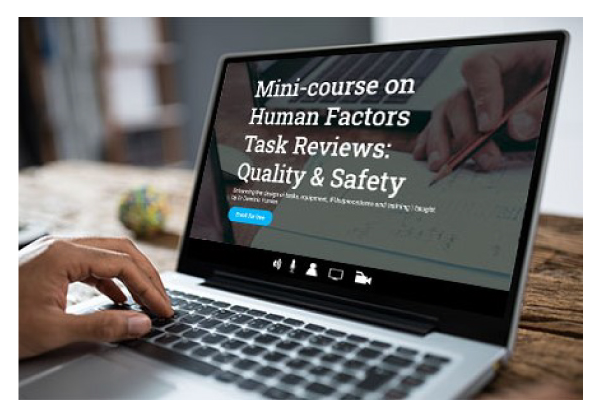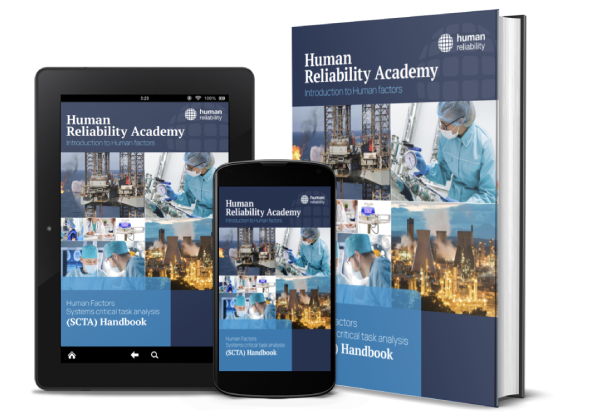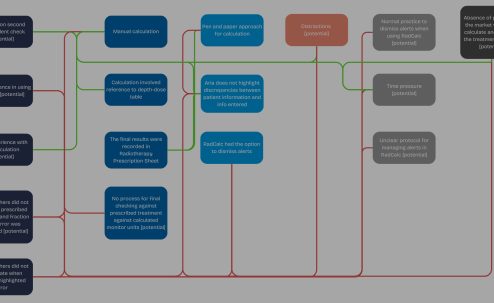An important part of conducting Human Factors Critical Task Reviews (HFCTR) is the walkthrough and talkthrough of the task at the plant or site. This is to see the context of the task first hand, check task details and assess human factors issues. In response to COVID-19 movement restrictions, we have already written about conducting Human Factors Critical Task Review (HFCTR) workshops remotely [see link at the base of this post]. This post focuses on the possibility of doing remote walkthroughs to support that work.
Remote walkthroughs allow the sorts of task insight one would expect from a physical walkthrough without visiting the site. We distinguish these from virtual walkthroughs which might be a computer simulation of a site, which might be used during a plant design phase. Remote walkthroughs relate nicely to ‘digital stories,’ which is a relatively recent phenomena where people with little experience of filming tell their story using digital tools.
Both video and photos seem like suitable media to help people see their task and their story at a distance. We address both in turn.
Live or pre-recorded video seems like it could be useful for remote walkthroughs. Live video could allow you to be shown around a task as if you were there. Importantly, you could probe into task details and ask questions around human performance issues as they arise during the walkthrough. However, mobile video is limited in scope visually, sites are often noisy, can be dimly lit, and might not have good reception to conduct a video call. There might also be issues with regard to the availability, expense and picture quality of ATEX equipment within zoned areas associated with The Dangerous Substances and Explosive Atmospheres Regulations 2002 (DSEAR). Pre-recorded video is another option where site staff would record a walkthrough of the task and then talk through it and answer questions during a workshop.
Photos are a low cost and simple alternative to video. Much like a comic book photos can be threaded together to tell a visual story of the task. These could be annotated, or staff could talk through the photos during a workshop. Something like PowerPoint could be used to easily display photos, annotations, divide the task with title slides into sub-goals, and the comments section could be used for notes. Recording a voice over, with Q&A and probing using Zoom or Skype, could provide evidence of a walkthrough for the HFCTR that is not usually available to regulators or other staff at the site. Similarly an annotated picture story of the task could complement the usual HFCTR report.
Like video, the people behind the lens will be drawing attention to some things and ignoring others. These might not be the same details that a human factors professional would attend to if physically on site, as people who have studied many errors and accidents, and are used to assessing the cognitive environment that shapes the thinking of operators. I recall doing a walkthrough of a tanker offloading task, involving nasty chemical-A. The pump for chemical-A was fully locked down so it would be very difficult to pump anything else into chemical-A tank. However, not too far away was a pump for chemical-B’s tank which was innocuous and not locked down. There was the possibility of someone pumping chemical-A into the tank for chemical-B, which would have led to a major accident. Would untrained staff pick up on these important concerns that are on the periphery of the task they are focused on? Some of these concerns could be mitigated by providing training and guidance for staff conducting the recordings. The other thing is that these remote walkthroughs could be iterative, building detail through a dialogue with a human factors professional.
Walkthroughs are an important part of the HFCTR process, so the task can be seen, put into context, details checked, and human factors issues assessed. Video and photos seem like good alternatives for allowing analysts to see the task at a distance, to improve the quality of remote HFCTR. These remote walkthroughs could have real depth or could be more lightweight, depending on the site’s preference and capability. We’ve included three pictures created with PowerPoint to illustrate:
A) a lighter weight picture story,
B) a deeper picture story, and
C) a deeper picture story with some human factors commentary and insight.
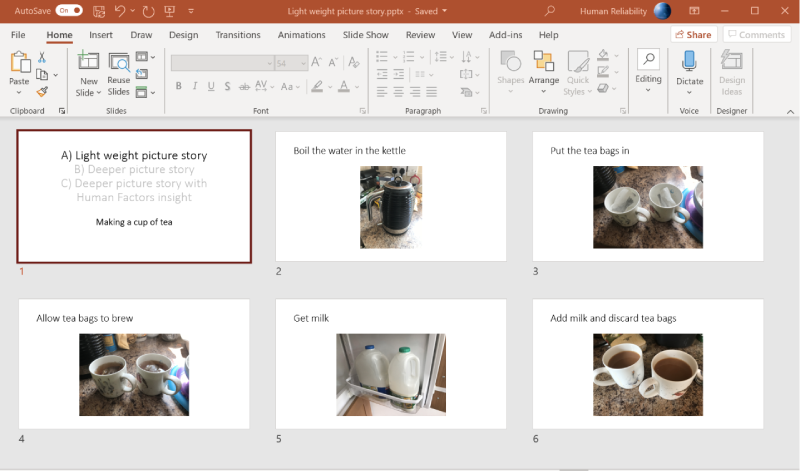
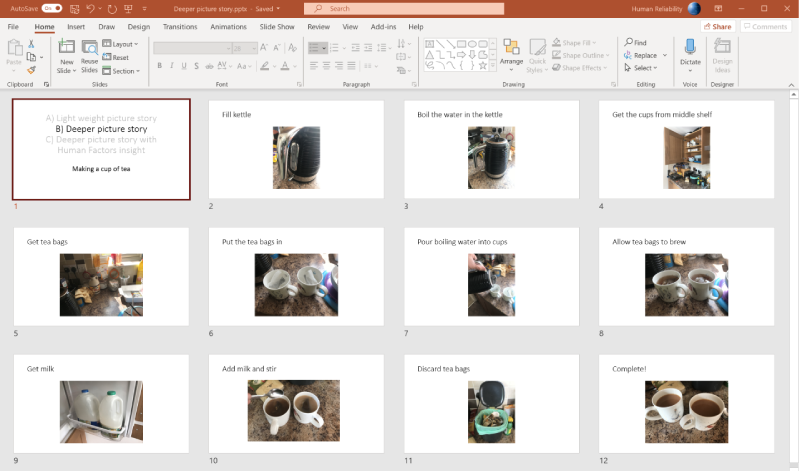
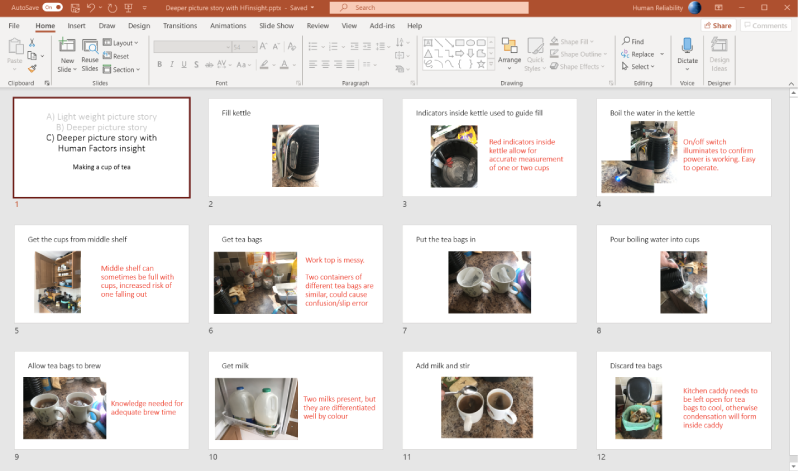
We’re taking a cautious approach, exploring what is capable with sites, with the intention of following up with a physical walkthrough for completeness when the lockdown is lifted. We will monitor the quality of these remote walkthroughs and adapt our approach accordingly.
Innovations in the face of adversity can have longer term benefits. One can imagine remote walkthroughs having benefit for particularly nasty contexts (e.g. Hydrofluoric Acid (HF) Units that require additional training and various classes of PPE for access) and places that are not easily accessible (e.g. offshore) even after the COVID-19 lockdown has lifted.
If you liked this post you might also like a previous post by Jamie on Coronavirus and Human Factors Safety Critical Task Reviews (HFCTR) – Opportunities for remote-working during a lock-down
If you need Human Factors help and advice contact our Human Factors consultants to discuss your requirements and how we can help.







